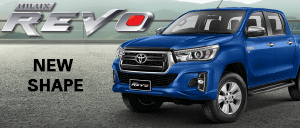Many people take joy in driving their vehicles and enjoy even more when they travel on longer routes but it is a must for everyone to take care of their vehicles and make sure that the trips they make are safe.
There are a few prerequisites a person should take into account before driving on long routes. These prerequisites will help you ensure that your trip is trouble-free and completely safe. Change your car’s oil if needed; get belts and engine checked along with the windshield if they were ever replaced.
Every country has laws regarding the use of seatbelts. There are laws that prohibit messing or disengaging the airbags but there is not much stress on how a windshield is replaced. Studies have shown that inappropriately replaced windshields could prove dangerous. Such windshields may become detached from the vehicle during the deployment of airbags from the intensity of a crash or when the car rolls over. If the windshield is not properly attached or disabled then the efficiency of the vehicle’s safety system is badly affected.
The big dilemma that surrounds this problem is that the layman will not be able to ascertain whether the windshield was improperly changed before it is too late. There are many different companies and workshops that are performing safe and secure windshield replacement. But you need to be aware of the procedure, just to make sure.
There are certain questions that a person should the before replacement takes place. The first and obvious question to ask is whether the windshield needs to be replaced or not. Chips, cracks or dings that are not big and can be covered by a currency note are normally repairable without the removal of the factory seal.
If decide to go for a repair, then ask the technician to;
1. Remove the old sealant leaving approximately 1/16 inch bonding surface.
2. Clean and prime the glass and the vehicle pinch weld.
3. Wear gloves so as not to contaminate the clean glass.
4. Use urethane adhesive (not butyl tape or silicone).
5. Check for a passenger side airbag and, if present, use urethane rated for that type of installation.
6. Discuss how long before the vehicle can be driven.
7. Tell you the “do’s and don’ts” of operation during adhesive curing.
Once everything is set, check the work carefully. It is not rocket science to check whether the installation is flawed or not. Check from the outside of the vehicle if the windshield is centred and the distance from left to right is perfect.
Lastly, check if the moulding fits seamlessly around the circumference of the windshield. See if the moulding is broken, flat, or like a roller coaster. Most importantly, inspect whether the glass is flushed with the body. If any of these problems are present then you have every right to suspect the installation; otherwise, your car is safe and ready to drive.
When you plan on making an auto glass repair, you need to opt for quality and it is not a product to be compromised on. People need to use the best materials, science has to offer.
Be careful and drive safe.



























